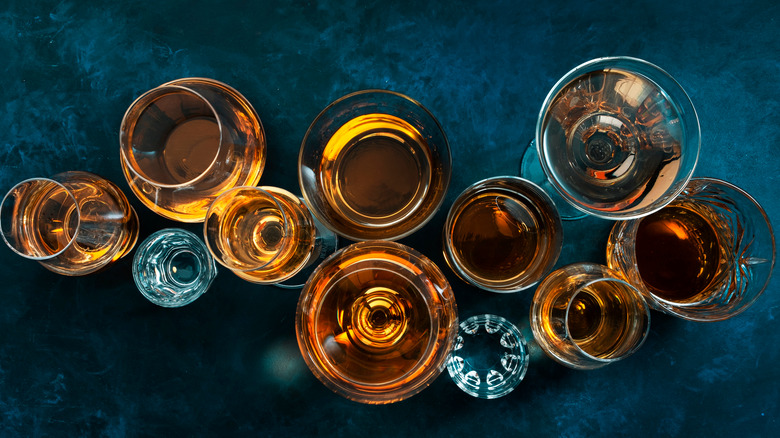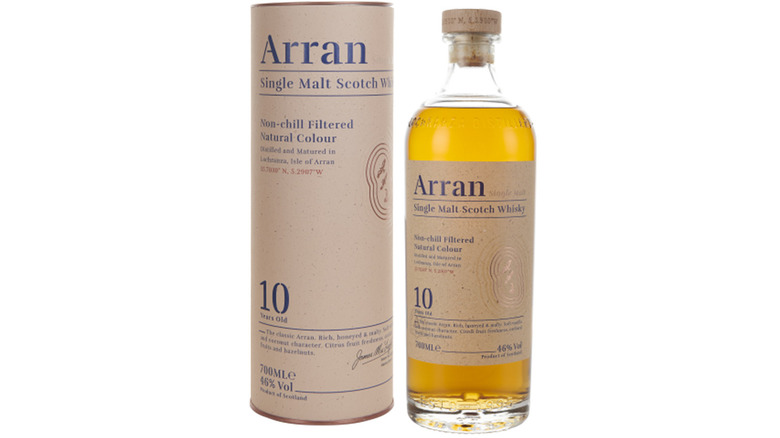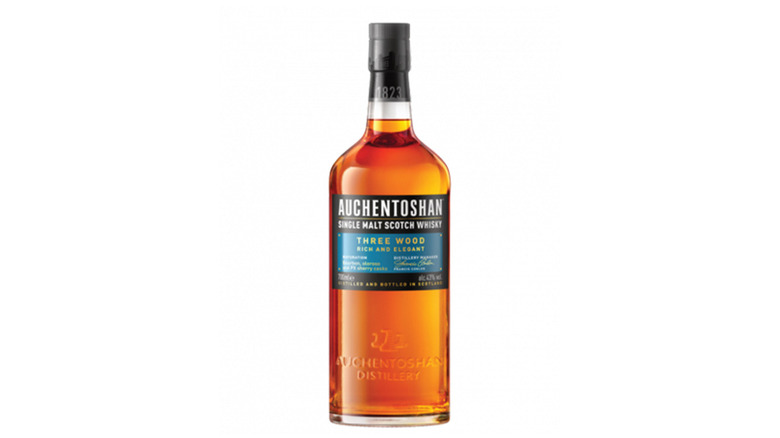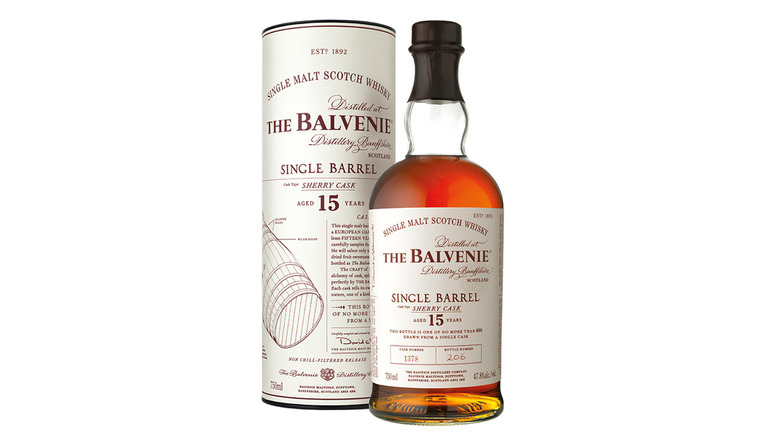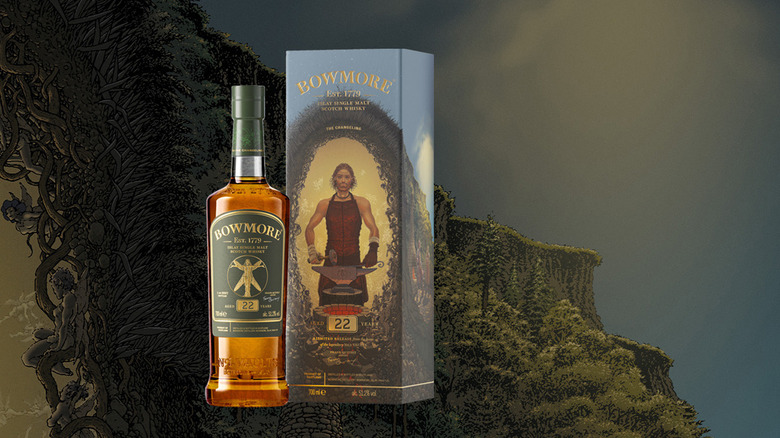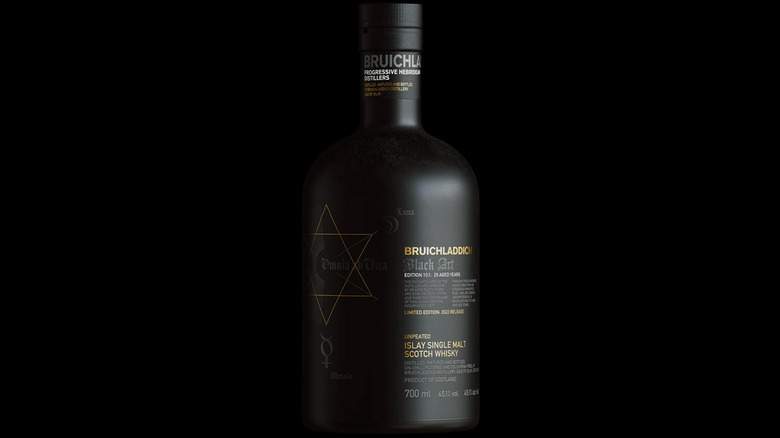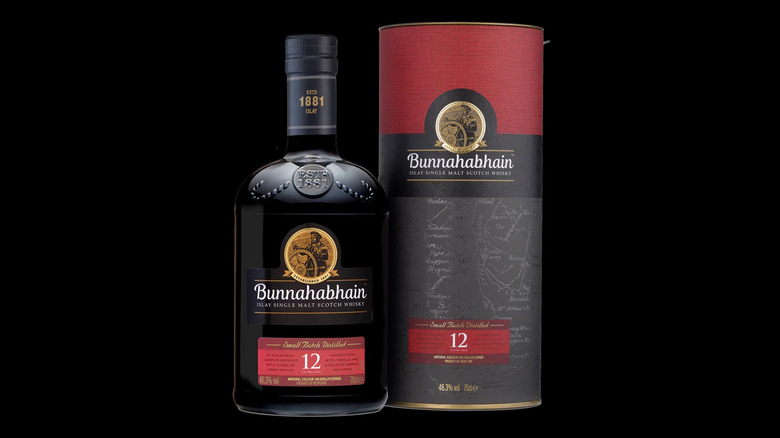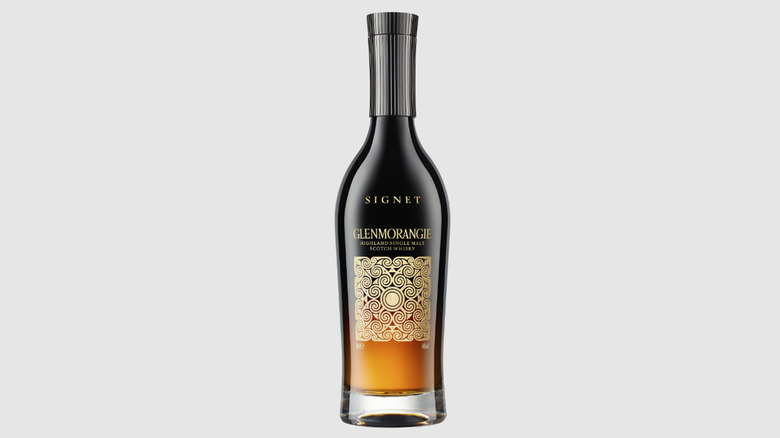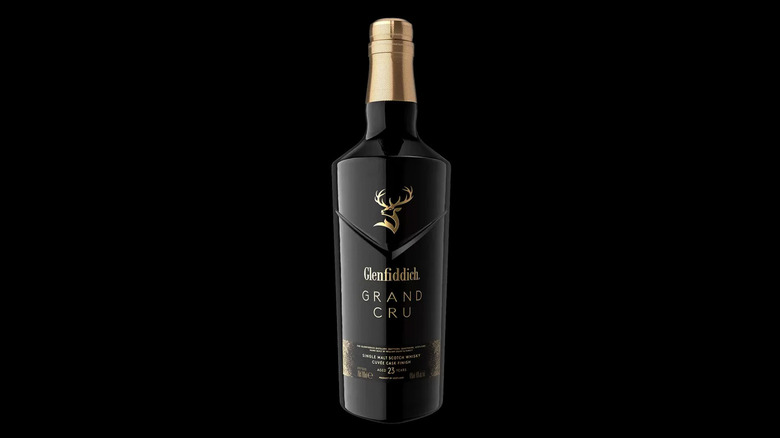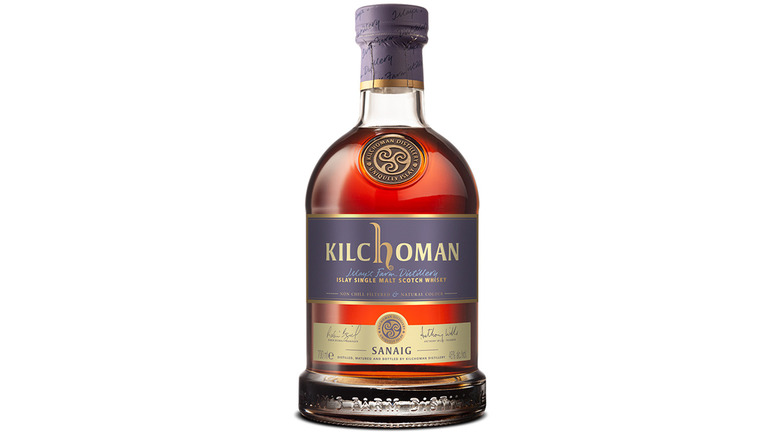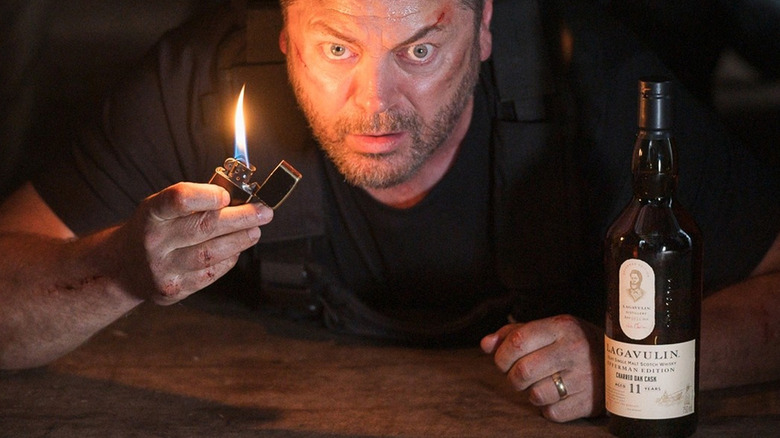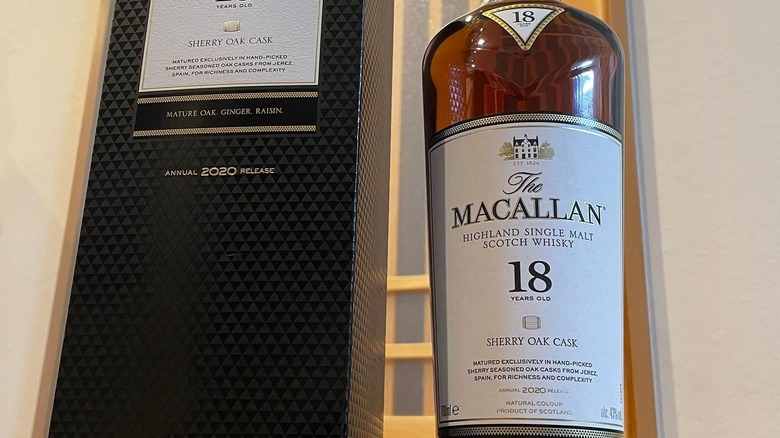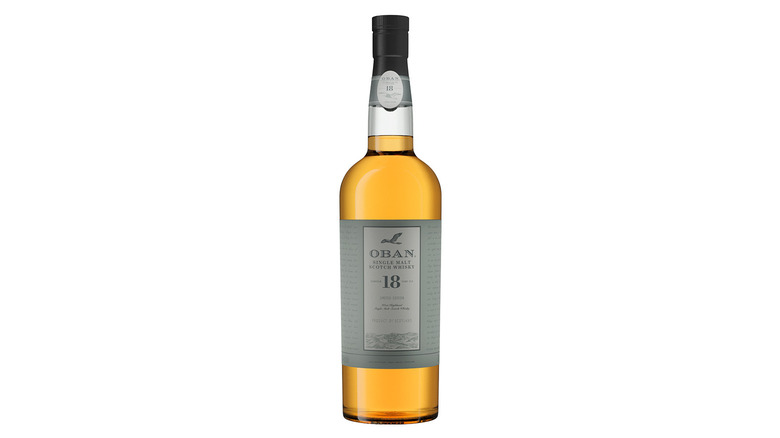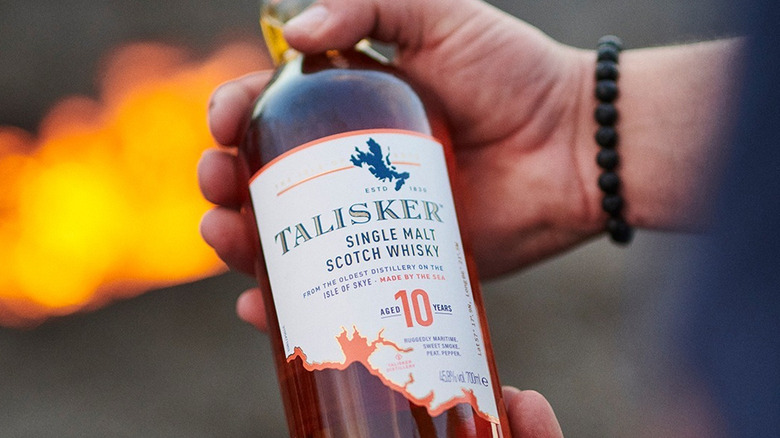The 15 Best Single Malt Scotches To Try In 2023
With this week's Burns Night, there's no better time of year to raise a dram of Scotch whisky. Why not try one you've never sampled before? While there are more great Scotches than we can list, some are more commonly agreed to be must-try. Not every evening demands the rocket fuel adventure of bourbon — no, not even if the bottle is one of those special bourbons every collector needs to find. Some wintry nights you want to read poetry by the fire or enjoy a long, luxurious meal with friends. That's a contemplative Scotch evening singing its allure to you. Heed its call.
In that spirit, here are 15 of those in a tasting tour of Scotland's whisky-making regions, and if you're not convinced of Scotch's superiority, well ... We're sorry for doing an exceptional job selling you on the best American whiskey brands to the exclusion of everything else. Consider this a chance to learn and grow.
Arran 10
Arran 10 is a masterful Scotch whisky, friends. As Reddit reviewer DramblingMan notes, it's an intentional whisky from the braille on the label back to its first production steps. Non-chill-filtered, it packs a tropical cocktail of suggested tastes into the mix before a pastoral finish. If you have a friend who insists on a drop of water in every dram, this is the bottle to break out before supper, responding well to a splash that opens it up while also taming some of its wilder tendencies.
All this, and barely $60 on Caskers, makes Arran 10 a truly trustworthy bottle to pounce on. Nobody's walking away from Burns Supper disappointed after this one. Perhaps it's because Arran is distilled twice using two types of copper pot stills. Or maybe it's just the local water used to craft this Island single malt, as per master distiller James MacTaggart. Whatever the answer, Arran 10 is a deal that doesn't disappoint.
Auchentoshan Three Wood
Auchentoshan is the Lowland region's only triple-distillation whisky maker (for now — there are several distilleries in development), but the three in Auchentoshan Three Wood refers to the bourbon and two types of sherry casks used to bring it fruition. And fruition is the word, friends; this Scotch mixes citrus, stone fruit, and dried vine fruits from nose to finish. That's not odd for a whisky, but it definitely steps out of line from the normally grassy Lowland profile.
Three Wood also bucks the Lowland trend with its boldness, which ... hunh. You know, thinking about it, this bottle resembles a Southern Highland, and Auchentoshan distillery does lie near enough to the region's border to make the case of crossover. But it's a change-up from a distillery known for its famously light and even delicate liquor.
Three Wood won't be for everyone. But for those who like their Scotch whisky sweet, spicy, and rich, here's your plum pudding in a bottle.
Balvenie Single Barrel 15 Sherry Cask
A single barrel is a funny thing. Like the age statement, it's no guarantee of quality, but it usually delivers on its promises because it's made the master distiller particularly proud. When a cask has so much going for it that a blend would bury its voice, expect something special.
So Speyside gives us this single malt Scotch whisky aged 15 years in a European oak sherry cask. (Though Whiskey Reviewer distinguishes the 350 bottles per cask from the non-sherry 15-year iteration, an even better yet rarer prize.) That means a mere 800 bottles, at most, exist for a given sherry Balvenie barrel. Balvenie assures you they're all close enough to enjoy, though, and enjoy you will because, on the company's advice, you can drink it however you like without missing out. You can't screw this one up unless you mix it into a cocktail, burying its nuance worse than any blending could ever do. (Though if you have something you don't mind mingling with softer drinks, there are some quality drinks to mix with whiskey.)
Balvenie is known for cask finishes that gave us the beloved 17 Doublewood, and frequently it ages its whisky to more mature depths. But there's a lot of feeling that the recent 21 doesn't land half as well as this 15. See? An age statement isn't everything.
Bowmore The Changeling 22-Year
Whisky aged in barrels that housed Earth's most luxurious wine. If that's got your attention, hang on.
Frank Quitely may become better known outside the comic book world once director James Gunn makes good on his nods to the artist's work on the "All-Star Superman" run. For now, whisky fans know Quitely as the artistic collaborator for Bowmore's ultra-premium releases: 2021's No Corners to Hide had both 23 and 32-year-old expressions, while 2022 saw the birth — or cradle swap — of The Changeling, available in 33 and a 22-year bottles. Though the artist is Glaswegian, he's illustrated two Islay myths befitting Bowmore, with more seemingly in the hopper.
Dressed in Quitely's art and matured after two decades in American oak, then in barriques of Royal Tokakji's sweet wine Essencia — Taste Hungary details this as an excessively rich variety — these Bowmores are fated for the auction and collector's circuits. Amid scant reviews, Whisky Base rates The Changeling a 90.36 out of 100. Lavish Life says bottles only appear at travel retail — presumably airport duty-free shops — with the 22 priced at $440 and an on-the-nose $3,300 for the 33-year. It's hard to imagine a whisky worth thousands, even if a perfect score, but it's the most devotedly Scottish product to pop open with friends around a fire before Burns Supper if you want to live exorbitantly one night a year.
Bruichladdich Black Art Edition 10.1
You can't pick a bad Bruichladdich. The distillery continues to impress with every expression, as well as its unbottled activities supporting employees and Islay's ecology, as detailed in Esquire.
Bruichladdich's premium products are highly sought after, so if you desire a sample more than a bottle, find a bar serving expensive pours of Octomore, the label that regularly shatters its own record for most-peated Scotch. Feeling fancy? Track down Bruichladdich Black Art Edition 10, wherein master distiller Adam Hannett shows his knowledge of the craft. This compendium of arcane knowledge thoroughly impresses — which explains why a bottle is going to run you about $600 and up, according to Wine Searchers. That's still a deal if you believe the buzz that 2022's 29-year Black Art is the best expression yet. If you find a bar serving it for under $50, that's the right price for a gift to yourself.
Don't despair if you can't go luxe; Bruichladdich's mainstays are spectacular. It's not Octomore, but the Port Charlotte lineup is smokier than most whiskies out there at 40 ppm. It also appears in the Islay Barley domestic terroir project, explained by The Whiskey Wash. Its peatiness is a perfect pairing for the best cuts of pork to smoke, assuming you're not serving a haggis. But probably that too.
Bunnahabhain 12 Year
We confess to some strong favoritism towards Islay. Can you blame us? The far-flung island is outsized in whisky esteem. If you want to go premium, there are many options, but when the base product is this good, you don't have to. Enjoy the moment's where the extraordinary is accessible. The classic Bunnahabhain 12 Year has been straightforward and satisfying for four decades and counting, delivering more of a Highland profile than the typical peat-monster Islay flavor. You'll still get that smoke, but it's the entry point for open-minded mainland enthusiasts. It's a standout that both live up to what Scotch should be and defies its origins to surprise and delight, all for a reasonable price.
If it turns out your guests like that smoke after all, crank it up with the peated Moine. You may even save a few bucks by comparing its price to the identical Staoishe, according to Reddit.
Glenmorangie Signet
Glenmorangie Signet is not only unlike any other Scotch but any spirit you care to name. This Highland concoction is expensive, but if you're saving and savoring, it will bring you years of delight on special occasions. The powerful coffee profile gives way to dessert tones, making it oddly proficient as either aperitif or digestif. With as much variety as Highland Scotch offers, this is still beyond the pale.
Glenmorangie Signet's blend is aged up to 40 years, though lacking an age statement; The Whiskey Jug puts most of it at a much more manageable 15 years while noting for Glenmorangie, it's more about hitting the taste, not time requirements. Higher-end Glenmorangie tends to succeed on more familiar points. Signet is where it gets weird, and you can't put a price on that. But if you could, it would be about $246 for a bottle on Drizly. Costly, or a discount on a one-of-a-kind, top-scoring whisky?
Glenfarclas 105 Cask Strength
Confused by the 105 number on a 60% ABV? You're not worse at math than you were two whiskies ago. Scottish distilleries use a different proof ratio than the U.S. doubling. You'll multiply the ABV percent by 1¾, according to Scotch Whisky.
You can get a bottle of this very-sherry darling for $100 after a long word-of-mouth boost settles down enough for inflation to catch up. One can praise Glenfarclas 105's endless sherriness as just the thing for Christmas pleasure while echoes of chocolates and fruits sleigh beyond the sherry ad infinitum. It's rich and sweet, fruity and spicy, hot and bold ... a cozy, if bumpy, sleigh ride of a drink. A happy Scotch drinker indulges it like an old friend well worth two figures.
By Glenfarclas's advice, you'll want to open it up with a drop. Your tongue will thank you as new flavors emerge, revealing the depths that issued them while alleviating some burn. Whiskey Reviewer, praising the nuance behind the punch, disagrees and feels the water diminishes its victories. Decide for yourself.
Glenfiddich Grand Cru
Glenfiddich is on a luxury tear with the Gran/Grand/Grande line. The high-premium series is aged in different barrels of other origins to give their contents strong streaks of, say, tropic rum. Or, in Grand Cru's case, the French cuvée barrels where the spirit finished after 23 years spent developing in American and European oak casks.
The differences enumerated in Esquire's profile of each expression's taste exhibit different luxury profiles. Some of us might not be able to afford Grande Couronne, but once in our lives. But let's say you want to get wild elegantly and are willing to pay for the experience. Then Grand Cru is perfectly situated to take you to the Continent for a night of adventure. It's about $300, has a 23-year age statement, and is absolutely a better gift than a bottle of Johnnie Walker Blue you were told makes the best gift. (Besides, Johnnie Green is the better buy in the line.)
Glenlivet 21
Glenlivet is Scotland's oldest legal distillery, a fact which sounds like the horn of adventure calling us to find the illegal ones. But no moonshine still that's weathered two centuries can bring with it the mystique of this stuff.
While Glenlivet 25 is almost inarguably a finer whisky, we recommend Glenlivet 21 for this list. It's like the younger sibling with a more colorful personality. Either expression is like drinking silk and butter, but Glenlivet 25 will confirm your ideas of what Speyside Scotch should be, whereas 21 will challenge it. The briny 25-year tastes like a lot more than four years' difference in development, but the 21 — by turning salty, sweet, soft, and oak the way it ought to appear — will make you pause and look at the drink in your hand. It's a Scotch with the wisdom to know better and the vivacious spirit to do it anyway. You'll need $340 to acquire a bottle from Caskers, but trust us; it is worth it if this is your one splurge whisky of the year.
Kilchoman Sanaig
We're not going to apologize for Islay running this list when we couldn't even choose between Kilchoman's Sanaig and the peatier Loch Gorm. In the end, we went with the more balanced bottle because, apparently, some of you reprobates don't appreciate a mouthful of peat. Well, here's the bottle that can bring you into it steadily and gladly. This able peatiness is evocative of barbecue, despite sherry trappings. Both labels are reasonably priced to the standard $75 range for Islay imports, plus or minus a sawbuck, and both satisfy deeply, depending on your tastes.
Aged in bourbon casks, finished in sherry, and bringing smoky bacon and dried fruit combinations, Sanaig is an experimental outlay compared to the standard Port Machir's example of what Islay is. It's the more experimental band you get into once you follow your tastes in the algorithm. That's always going to create some naysayers. Anything interesting enough to differentiate itself is bound to alienate a few. But for those who stay, the taste may strike you as an equivalent to your beloved garage band.
It's the bottle knowledgeable liquor clerks recommend to fans of other Islays because Kilchoman's line will illuminate where your true tastes lie.
Lagavulin 11 Offerman Edition
Macallan has James Bond. Johnnie Walker has Game of Thrones. Lagavulin has ... Ron Swanson. Or, more accurately, it has Nick Offerman, who is distinguishable from Ron Swanson in many ways but shares a love of Lagavulin. In fact, Offerman embodies all the best elements of his character from Parks & Recreation while possessing none of the latter's foibles. The soft-spoken, big-stick-mill-working carpenter and actor received the affections of a generation looking for its knowledgeable uncle, then introduced fine Scotch to their many Millennial minds.
Just as there's more nuance to Offerman than Swanson, so there is to this special edition of their mutually beloved Scotch. Because Offerman is also a fan of Guinness, Caskers says this batch came of age for four months in barrels previously containing the Irish stout. Like the Arran 10, it's double distilled in a wash and spirit stills. What could have been a gimmicked bottle has proven its worth among reviewers.
This is another pricy bottle in the mid-$200s. But that also makes it the perfect expenditure for a gathering of beloved friends. Its flavor is bracing yet complex: no surprise in Islay whiskies or the Offerman brand.
The Macallan Double Cask 18 Year
If you don't have several grand in your pocket for the M series, which rests atop a steep incline to a 30-year costing several thousand dollars, then please consider The Macallan Double Cask 18. Aged in American oak for pleasant baking flavors, then European oak for a spicier element, it's the proud owner of a sugary taste map resembling a blondie.
The big question is whether this $350-ish bottle is worth the ticket to ride. We certainly think so and would call it an absolute must-try in terms that recommend the bottle over a glass at the bar. If you need to hedge that bet, Uproxx asked the same thing and concluded this is a stunning 95 out of 100, dinging the barley juice only for its technical perfection, lacking any surprises. That is a fair point, but to be somebody's perfection, you have to be someone else's failure. The Macallan has gone the route of being a clear winner to all, with that baseline success served by its unimpeachable strength.
Oban 18 Year
If you can get your mitts on 2008's Oban 18, then Scotch lovers alike will be proud of you for making the right choice and spending your money wisely. (Caskers reckons it'll cost nearly $200 to obtain a bottle, and it's been slowly but steadily rising since Drinkhacker gave this bottle an A- for its smoky fruitcake flavor.) The micro-distillery is one of Scotland's oldest, yet it sent this lovely bottle to a States-exclusive release. How thoughtful! Also, appropriate, since this adult beverage matured in American oak barrels that formerly housed bourbon, making its release a swell cultural exchange program, as so many 18-year-olds undertake at that age. (Although they can only drink this bottle legally in Scotland, where they won't find a bottle of Oban 18 — oh! The painful irony.)
In the interests of fair reportage, The Dramble agrees quite a bit with Drinkhacker about the profile but adds in some herbal findings before concluding that its quality doesn't quite meet its price point and deducts a few more points for leaving potential on the table. Oban 18's a strong candidate for a tumbler at the bar, where overpriced means a $5 difference instead of a $50 one. With fewer than 9,000 bottles produced, and many of those now consumed, it's worth trying while you can.
Talisker 10
Suppose you had six grand for the 44-year-old Forests of the Deep release; what a happy Scotch drinker you'd be! The rest of us make do with Talisker 10 because "settling for" certainly doesn't describe this bottle of Island magic. Anyway, the bottle still credits the sea with imbuing its finest qualities, which speak to almost all tastes. While Island Scotches are technically part of the Highland region, they're such standouts in flavor and distinction that their distilleries' recognizability argues for a separate identity. Talisker 10 is a whisky entirely in its own class.
One can appreciate how Talisker steps boldly into big flavors with deft integration. This sipper is a dance, not a march. The taste of the beach is a continuously repeated theme through reviews, as Talisker 10 ably suggests tropical fruits with seafood on the tongue. Sounds like ceviche to us. The estimable DrinkHacker rates it an A- which is no slouching grade at a mere $40, but does recommend you lean towards bottlings older than the current spate. Take a recommendation to enjoy it after dinner with friends. It'll cleanse the palate.
